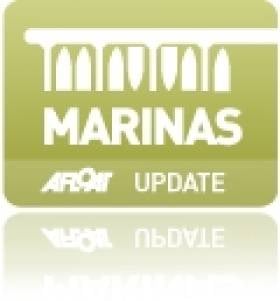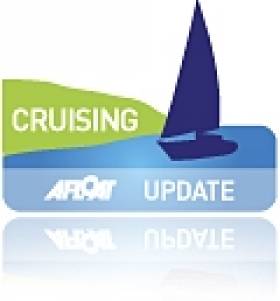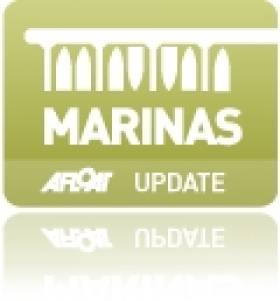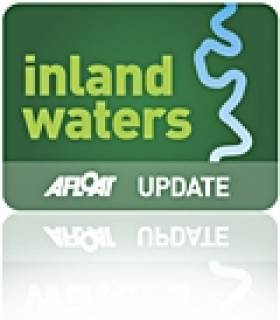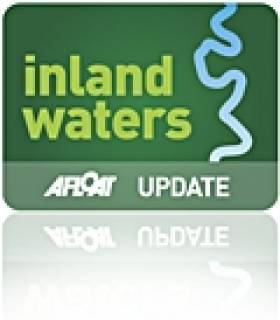Displaying items by tag: Mooring
Dromquinna Manor Pontoons. Berths for Boats in Kerry
Boating facilities at the Dromquinna Manor resort in Kerry include pontoon berths offering the boating enthusiast a wonderful base to enjoy the south-west coast. The current facility comprises a long jetty in the Kenmare river.
Moored on the Erne? 48–Hour Rule Now in Force
#ERNE – Boats owners using public moorings on the river Erne in excess of two days are liable to prosecution according to a Waterways Ireland notice issued today. The authority advises masters and owners of vessels and boats on the Erne Navigation that procedures to initiate prosecutions for contravention of Bye-law 19 of Lough Erne (Navigation) are now in place. The bye-law states "No master or owner shall permit a vessel or boat to remain moored at or in the vicinity of any public mooring for a continuous period in excess of 48 hours save that a new period of 48 hours shall be deemed to commence following an absence from the mooring for a period of four hours or more".
Norway Relaxes Law on Leaving Foreign Flagged Yacht
On 5th October 2011 the Norwegian Directorate of Customs and Excise amended the rules so that foreign boat owners can lay up their boats in private marinas for up to one year. (An extension for a further year will probably also be possible). Boat owners must apply to Norwegian Customs and Excise (Tollvesenet) for permission beforehand,. A special application form for boat storage has been drawn up. Currently this form is available only in Norwegian but an English version will be produced shortly.
Information about the new regulations and submitting applications can be obtained from the appropriate Customs Region. Norwegian Customs website is www.toll.no (also in English).
Norwegian yachtsmen have been at the forefront of the protest but overseas yachting organisations have also made representations to the Norwegian authorities. Foremost among these has been the UK's Cruising Association (CA). The CA's Honorary Local Representative in Oslo, Hans Jakob Valderhaug has worked tirelessly on behalf of members in close co-operation with the Association's Baltic Section Secretaries, Graham and Fay Cattell who comment: "This change in the law is a triumph for common sense and we are delighted that our members will be able to enjoy longer visits to Norway's beautiful coast without worry or penalty".
Skippers will no longer be forced to set out from Norway in inclement weather at the end of the season but can now legally leave their boats for the winter. Neither will they have to stump up a (refundable) deposit equal to the 25% VAT on the value of their boat plus a percentage tax for engine and refrigeration equipment.
New Mooring Facilities on River Foyle
Port Harbour master, Bill McCann says this is "positive step forward towards harnessing the potential of the River Foyle for tourism and commerce. The new cruise ship quay at Meadowbank, together with the new pontoon, add significantly to the marine facilities that we offer on the Foyle, which is particularly important with the Clipper Round the World Yacht Race calling at Derry in 2012."

Londonderry Port and Harbour Commissioners sign contract for development of Foyle cruise ship quay and pontoon
Chief executive of the Loughs Agency, Derick Anderson has expressed his enthusiasm for a project "that promises to aid the development of tourism along the Foyle and in the north-west generally, including Inishowen. The new water front infrastructure may reveal fresh opportunities for those planning events in the region, for instance, City of Culture in 2013. The Loughs Agency is optimistic that the project will optimise potential for water based events and activity and help bring the river to life in Londonderry's city centre."
Shaun Henry from the Special EU Programmes Body highlighted the strategic importance of this initiative for the region saying: "This project will allow the local tourism sector to draw on the natural environment of the region and its natural tourism resources. This is likely to attract a higher number of domestic and overseas visitors, contributing to improving the performance of the overall tourism industry, one of the key priorities of the INTERREG IVA Programme. By increasing the offer for high quality marine facilities in the area, it also builds on the strong cultural and economic linkages that exist between western Scotland, Northern Ireland and the west coast of Ireland, where marine tourism is a sector in expansion."
The project is supported by funds from the European Regional Development Fund. The Loughs Agency is lead partner in an Interreg IV programme that secured this funding for some much needed infrastructure. Details about marine leisure on the Foyle on www.loughs-agency.org or www.londonderryport.com
End of Winter Mooring Period in Public Harbours
Safety Precautions for Vessels and Crew
Owners and masters availing of winter mooring facilities for their vessels on any of Waterway Ireland's navigations are advised to choose a sheltered berth within the harbour, place adequate fendering between the vessel and the harbour wall and secure the vessel with double mooring lines.
The vessel should be monitored on a regular basis in the event that it should be taking or making water and particularly so after a period of stormy or frosty weather.
Owners visiting harbours during this period and who intend to work on their vessels should bear in mind the changed environmental conditions at this time of year and to take the appropriate measures necessary to reduce risks associated with working on or near water.
It is advised that personal protective clothing, to guard against the cold and the wet, including a personal flotation device, should be worn and all items checked for serviceability beforehand, bearing in mind:
• Low air temperatures
• Low water temperatures
• Reduced daylight
• Inclement weather
• Raised water levels
• Flood conditions including increased rates of flow
Working on or near water should preferably be undertaken in the company of a colleague. Lone working should be avoided if possible and especially at remote locations. Ensure that someone has been informed of your whereabouts and expected time of return.
Further, carry a mobile phone and/or a handheld Marine VHF, fully charged, for keeping in contact while being aware that full phone coverage is not available everywhere.


























